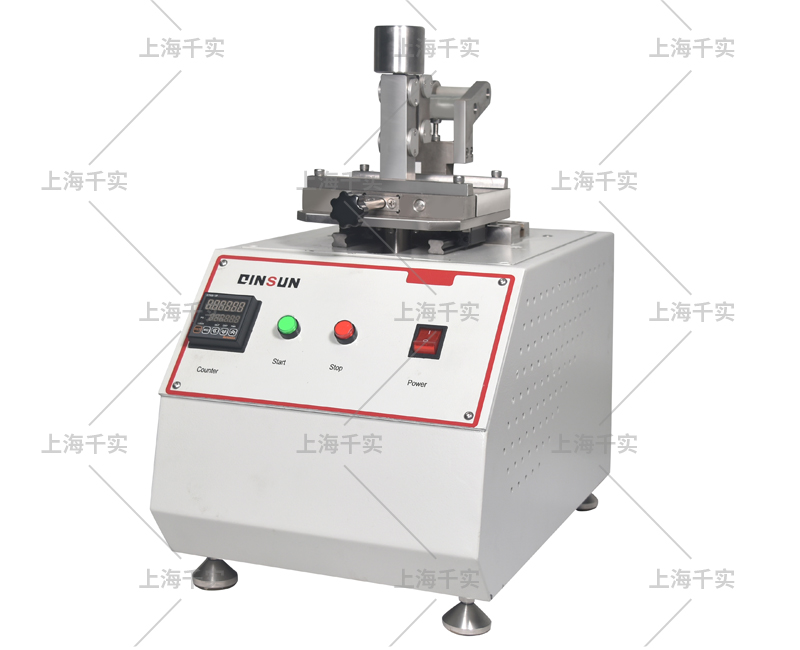- Qinsun Instruments Co., Ltd.
- Tell:+86-21-6780 0179
- Phone:+86-17740808215
- Address:No. 2578 Minhang District Gu Dai Road, Shanghai
- Contact:Mr. Li
- QQ:846490659
IULTCS Leather Color Fastness Tester 6 Operation Steps

IULTCS Leather Color Fastness Tester is applicable to testing the damage and decolorization degree of dyed upper and lining leather after friction. Test method: the test piece is wrapped on the surface of the friction hammer with dry or wet white wool cloth, and then clamped on the test bench by reciprocating friction.
[Compliance with standards]
ISO/105, ASTM/D2054, AATCC/8, JIS/L0849, ISO-11640, SATRA PM173, QB/T2537, etc
Operation steps of IULTCS leather rubbing color fastness tester:
1. Place the air conditioned sample on the test bench and fix it, and stretch 10% along the friction direction. If the specimen cannot stretch by 10%, stretch the specimen to the maximum allowable elongation. If the specimen cannot be kept stable during friction after 10% elongation, continue to stretch the specimen until the specimen cannot be stretched. In the last two cases above, the elongation of the specimen shall be recorded in the test report.

2. Test ordinary leather samples, and load the load block to make the total mass of the test head 1000g. For suede leather and similar leather (including front garment leather), due to the influence of large friction, the load block is not loaded during the test, and the total mass of the test head is 500g.
3. Fix the prepared test felt pad on the test head so that the test head contacts the leather sample horizontally. Select the friction times from the following data: 5,10,20,50,100,200,500
4. If required, replace the test felt pad with a new one, reselect the number of tests, and test the untested part (or sample) of the test sample.
5. Take down the sample and felt pad, and evaluate the color change of the friction area of the sample and the contamination of the felt pad according to 6. Wet samples and felt pads shall be dried at room temperature before evaluation. When testing white or light colored leather with black felt, the leather surface will change color due to the friction of the felt. In this case, the change of leather color cannot be evaluated. Only after testing with a white felt pad on a new part can the assessment be made.
Note: I Before assessing the color change of coated leather, it is very beneficial to lightly apply a layer of colorless shoe polish and polish on the leather surface with wool fabric. For suede or similar leather, it is also very useful to brush along the direction of the nap.
Note: 2 Colorless wax lotion is better for finishing In some cases, wax lotion is not suitable, and only brighteners and organic solutions containing wax components can be used. If shoe polish, polish and brightener are used, the composition or other details of the material shall be stated in the test report.
6. Grey sample card specified in GB250 and GB251 is used to assess the change of leather color and the contamination of felt pad Record any visible changes on the surface of the sample, such as changes in gloss, changes after use of the polish, changes in fluff or damage to the coating.





